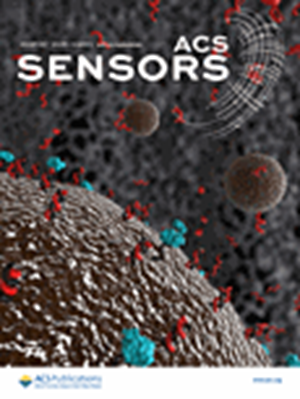利用集成可拉伸透明电极的多通道可穿戴设备进行移动睡眠阶段分析。
IF 8.2
1区 化学
Q1 CHEMISTRY, ANALYTICAL
引用次数: 0
摘要
老龄化人口中睡眠障碍的普遍存在以及睡眠质量对健康的重要性强调了对准确和可获得的睡眠监测解决方案的需求。多导睡眠图(PSG)仍然是诊断睡眠障碍的临床金标准;然而,它的不舒适和不方便限制了它的可访问性。为了解决这些问题,本研究开发了一种集成可拉伸透明电极(STEs)的可穿戴设备(WD),用于多信号睡眠监测和人工智能(AI)驱动的睡眠分期。WD利用导电和柔性STEs,记录多种生物信号(脑电图(EEG)、眼电图(EOG)、肌电图(EMG)、光容积脉搏波和运动数据),精度高,噪声低,可与PSG (<4 μVRMS)媲美。使用多信号输入训练的人工智能模型,它在睡眠分期方面达到了73.2%的准确率和0.72的宏观F1分数。值得注意的是,仅使用EEG、EOG和EMG通道时,准确性略有提高,这可能会简化未来的设备设计。这款WD为家庭睡眠监测提供了一种紧凑的多信号解决方案,具有作为个性化睡眠治疗评估工具的潜力。本文章由计算机程序翻译,如有差异,请以英文原文为准。
Mobile Sleep Stage Analysis Using Multichannel Wearable Devices Integrated with Stretchable Transparent Electrodes.
The prevalence of sleep disorders in the aging population and the importance of sleep quality for health have emphasized the need for accurate and accessible sleep monitoring solutions. Polysomnography (PSG) remains the clinical gold standard for diagnosing sleep disorders; however, its discomfort and inconvenience limit its accessibility. To address these issues, a wearable device (WD) integrated with stretchable transparent electrodes (STEs) is developed in this study for multisignal sleep monitoring and artificial intelligence (AI)-driven sleep staging. Utilizing conductive and flexible STEs, the WD records multiple biological signals (electroencephalogram [EEG], electrooculogram [EOG], electromyogram [EMG], photoplethysmography, and motion data) with high precision and low noise, comparable to PSG (<4 μVRMS). It achieves a 73.2% accuracy and a macro F1 score of 0.72 in sleep staging using an AI model trained on multisignal inputs. Notably, accuracy marginally improves when using only the EEG, EOG, and EMG channels, which may simplify future device designs. This WD offers a compact, multisignal solution for at-home sleep monitoring, with the potential for use as an evaluation tool for personalized sleep therapies.
求助全文
通过发布文献求助,成功后即可免费获取论文全文。
去求助
来源期刊

ACS Sensors
Chemical Engineering-Bioengineering
CiteScore
14.50
自引率
3.40%
发文量
372
期刊介绍:
ACS Sensors is a peer-reviewed research journal that focuses on the dissemination of new and original knowledge in the field of sensor science, particularly those that selectively sense chemical or biological species or processes. The journal covers a broad range of topics, including but not limited to biosensors, chemical sensors, gas sensors, intracellular sensors, single molecule sensors, cell chips, and microfluidic devices. It aims to publish articles that address conceptual advances in sensing technology applicable to various types of analytes or application papers that report on the use of existing sensing concepts in new ways or for new analytes.
 求助内容:
求助内容: 应助结果提醒方式:
应助结果提醒方式:


